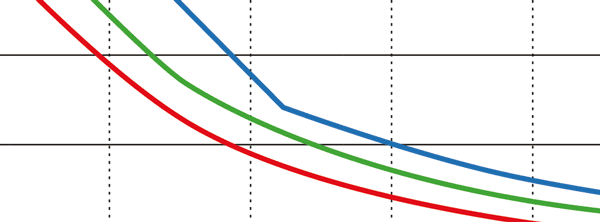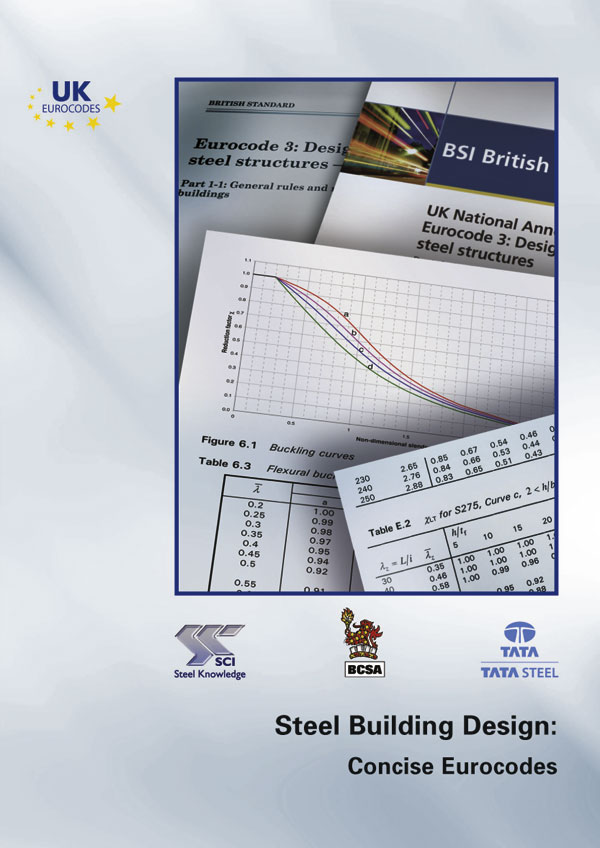Technical
AD 352: Fatigue assessment of crane supporting structures to Eurocode 3
This Advisory Desk note offers advice on fatigue assessment of crane girders (described in the Eurocodes as “runway beams”) and other crane supporting structures, in particular on the purpose of paragraph (2) of clause 9.1 of BS EN 1993-6 (Eurocode 3 – Design of steel structures – Crane supporting structures) and how it should be interpreted.
Clause 9.1(2) states: “Fatigue assessment need not be carried out for crane supporting structures if the number of cycles at more than 50% of full payload does not exceed Co .” The UK National Annex confirms that Co should be taken as 104.
The purpose of 9.1(2) of BS EN 1993-6 is to provide a simple preliminary check to see whether a detailed fatigue assessment is necessary. It was intended to avoid detailed calculations when the total number of operating cycles over the design life is modest. To achieve a simple rule it is necessary to make assumptions about the load spectrum, the design for strength at ULS (STR limit state) and the class of fatigue detail.
The first problem arises because of the use of the term “full payload” in clause 9.1(2). What is meant is the maximum value of the lifted load; it does not mean the crane capacity. It has mistakenly been suggested that if the crane capacity (“Safe Working Load”) were double the maximum lifted load, this would avoid the necessity for a fatigue assessment of the crane supporting structure. This is a misinterpretation, leading to an unsafe conclusion.
It has also mistakenly been suggested that if a crane supporting structure were designed for double the actual loads applied by the crane, it need not be checked for fatigue. This is also a misinterpretation, leading to an unsafe conclusion.
The second problem is that there is no statement about the number of cycles at less than “50% of the payload”. Although there was an assumption (in drafting the rule) that the total spectrum, of which the 104 cycles is part, has a normal (Gaussian) distribution, this is not explicitly mentioned. From the wording of the clause, it might be inferred that the number of cycles at less than 50% could be unlimited, but that would be an incorrect interpretation.
It also appears to have been assumed that the steel grade would not be higher than S275, that the span of the crane girder would be sufficient to avoid two load cycles for each pass of the crane and that the resistance of the supporting structure would be fully utilized under the ULS combination of actions. Taken with a further assumption about the relative magnitudes of crane self weight and lifted load, these assumptions imply a particular stress level under fatigue loading. Finally it appears to have been assumed that constructional details requiring the use of stress concentration factors will be avoided. None of these assumptions is stated.
It is therefore concluded that the rule, as expressed in clause 9.1(2) of EN 1993-6, is open to misinterpretation and potentially to an unsafe conclusion that a detailed fatigue assessment is not needed. This situation will be taken up with the relevant committees but in the meantime, the following modified version of the rule may be used.
“Fatigue assessment need not be carried out for crane supporting structures if the following criteria are all met:
- the required steel grade for the structure is not greater than S275;
- constructional details requiring the use of stress concentration factors are avoided;
- the load on the structure due to the self weight of the crane does not exceed 70% of that due to the maximum lifted load ;
- the span of the runway beams (crane girders) is at least 70% more than the crane wheel spacing (centre-to-centre of the first and last wheels in each end carriage);
- either: a) the crane loading spectrum has a ‘normal’ (Gaussian) distribution, in which not more than 10,000 cycles impose a load exceeding 50% of the maximum load in the spectrum;
b) the total number of cycles of loading on the structure, each cycle comprising of one traverse of the loaded crane and one traverse of the unloaded crane, does not exceed 10,000.”
This modified rule is conservative; failure to comply with all five criteria does not necessarily indicate that a particular structure will fail a fatigue assessment, only that a full fatigue assessment should then be made.
Contact: David Iles
Tel: 01344 636525
Email: advisory@steel-sci.com
Note: Thanks are expressed to Colin Taylor for his advice in the preparation of this AD.












